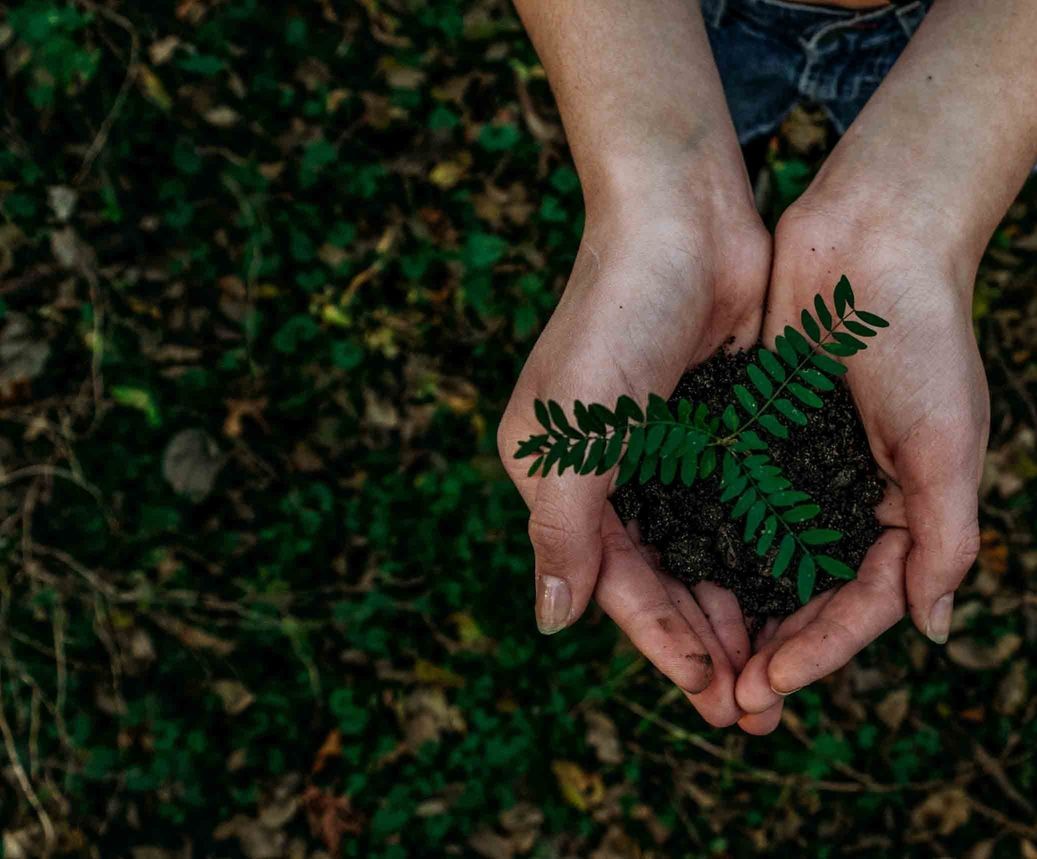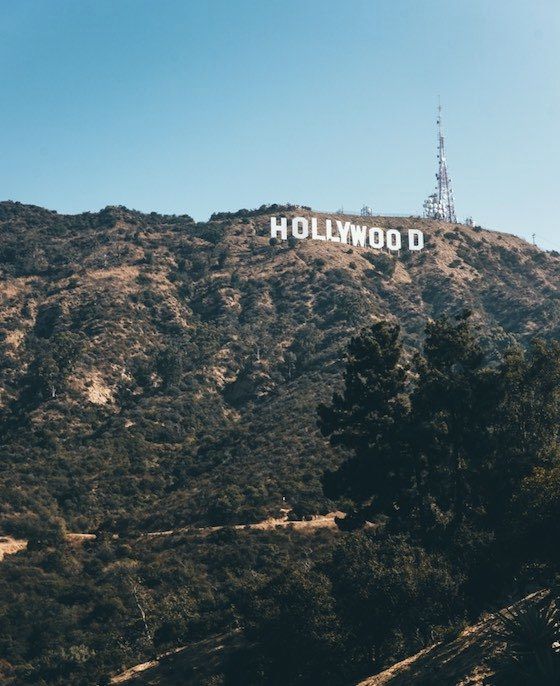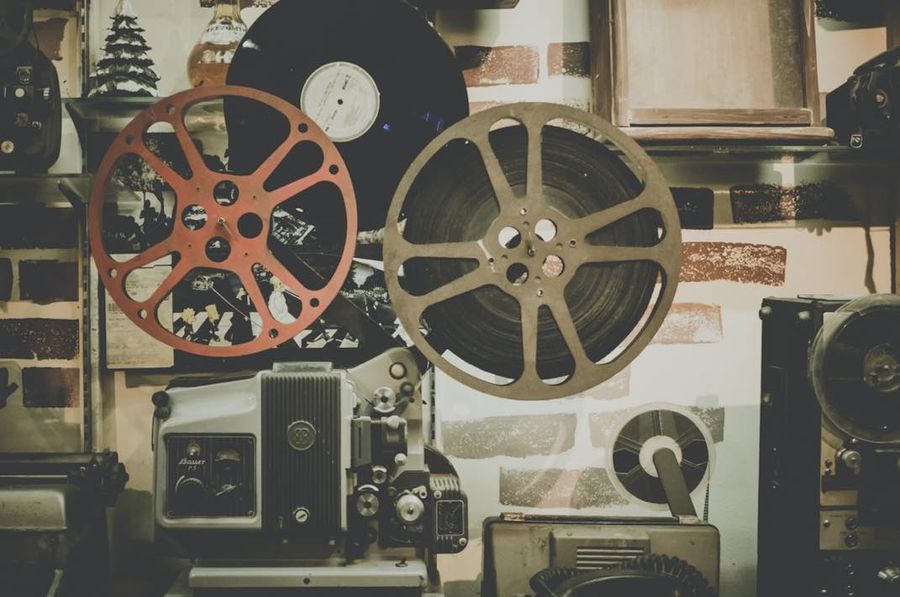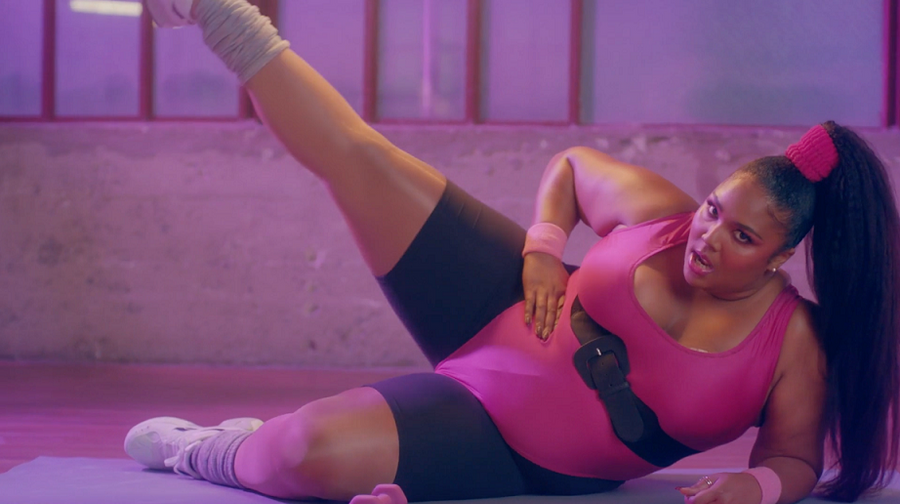Our planet is in a global crisis. Wildfires are ripping through the Amazon, temperatures are skyrocketing in the Arctic, and so many more shocking and terrifying natural events are on the rise. As human beings, it is our duty to protect and take care of our planet before the planet really starts clapping back. It should be no surprise to know that film sets can be some of the most wasteful places around. Things like the uneaten crafty, constant use of energy, and printed paper are just some things that can be eradicated from a film set in order to be sustainable.
Getting your act together and making your set more sustainable really isn’t as hard as you imagine it to be. Everything stems from your intention. If you really remind yourself that the planet needs these tools and really remind yourself that giving a damn about the planet is crucial, you’d be shocked by how quickly and efficiently you can implement certain things into your best practices. Here are a few small starters that can make a tremendous impact.
Use water refill stations instead of water bottles.
Film sets can turn into water bottle graveyards very quickly. We’ve seen cases on cases of water emptied on set. Don’t even get us started on the misplaced and half-empty bottles littered around. Instead, have crew bring reusable water bottles and have a water refill station or cooler.
“Studies show that people drink more water when they bring their own personal bottle. Get a few five-gallon drums for the set and require people to bring their own water bottles. The more sets that do that, the more it becomes normalized,” says Dilly Gent, Son&Heir founder, creative director, and all-around sustainability guru.
Water is probably the biggest and most effective thing one can change in production. It’s cheaper to buy the gallon jugs, and it’s the easiest thing you can show off to the world to prove you’re doing your part.
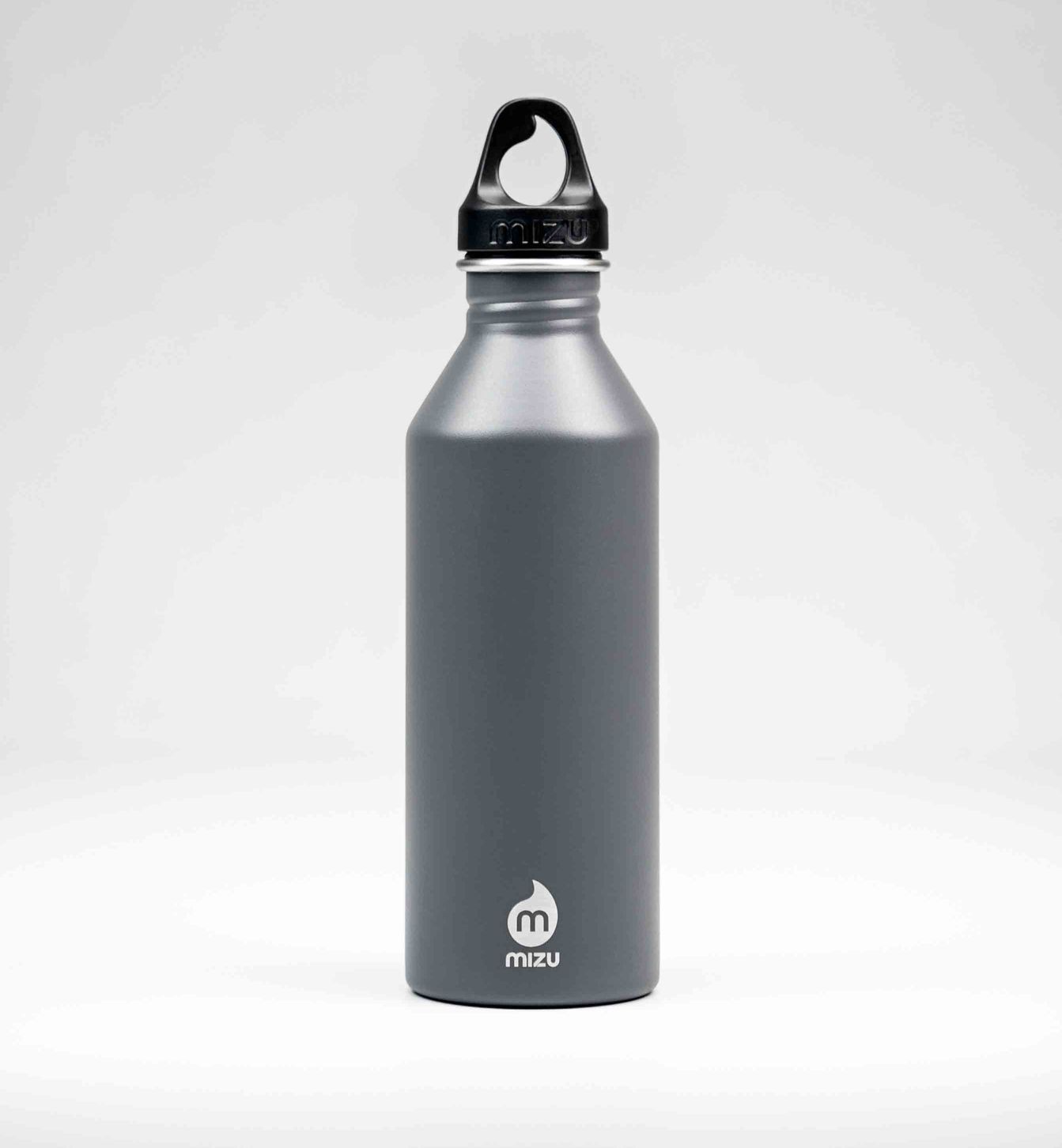
Have recycling and compost stations.
It may not always be easy for a production to have refill stations or reusable containers. A key to reducing waste in landfills is separating recycling, compost, and regular trash from each other. Have separate places for each to make it easier for people to differentiate. That way, even if you are being wasteful, there is still a chance to realign where the waste goes.
Kris Barberg, Executive Director of sustainability resource Ecoset, says, “Just putting out a blue bin and hoping for the best…you might as well call it trash. What is recyclable? Is it yogurt containers? Is it shopping bags, paper, and cardboard? You have to be really specific. What are you asking people to do? Oh, just cans and bottles in this can? Ok. Label it and make it super clear.”
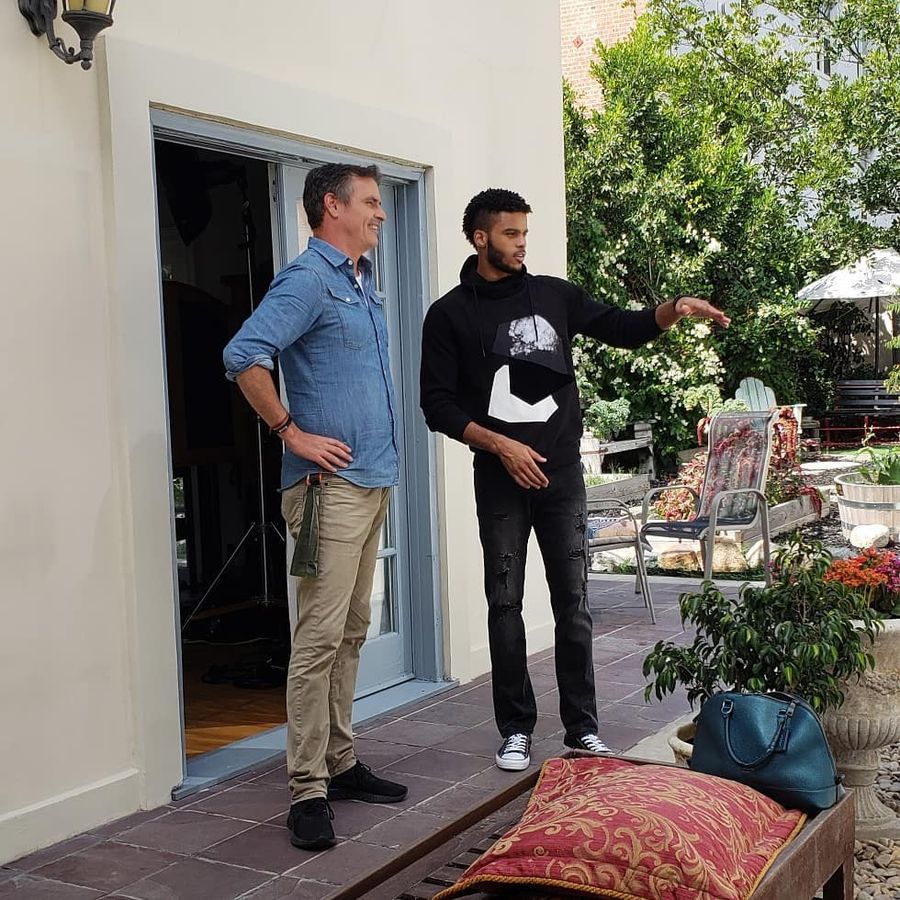
Have a sustainability coordinator.
“The labor piece is super important. That person can do e-waste drives, composting, making sure folks have reusable water bottles, donating crafty,” says Michael Kaliski, founder of Good Planet and the eco-friendly initiative Green the Bid. Designating someone to be the sustainability icon on set is crucial. PAs, the director, and everyone else is focused on one thing during a shoot: the film. Even with the best intentions, eco-friendly choices aren’t always at the forefront of the crews brain while shooting. But having someone whose sole job is to do that thinking for the crew is a game changer. Just imagine someone providing those reusable water bottles for you or making sure crafty is properly handled at the end of the day. This can be a reality!
“Have a green coordinator or green PA on set,” says Ari Kuschnir, founder of production company m ss ng p eces and avid supporter of the eco initiative Green the Bid. “The average shoot day on a commercial could be like $125-$200k. Put $2,500 towards a green coordinator or PA, recycling and composting, no landfill and donating and no plastic bottles…you pretty much have your bases covered.”
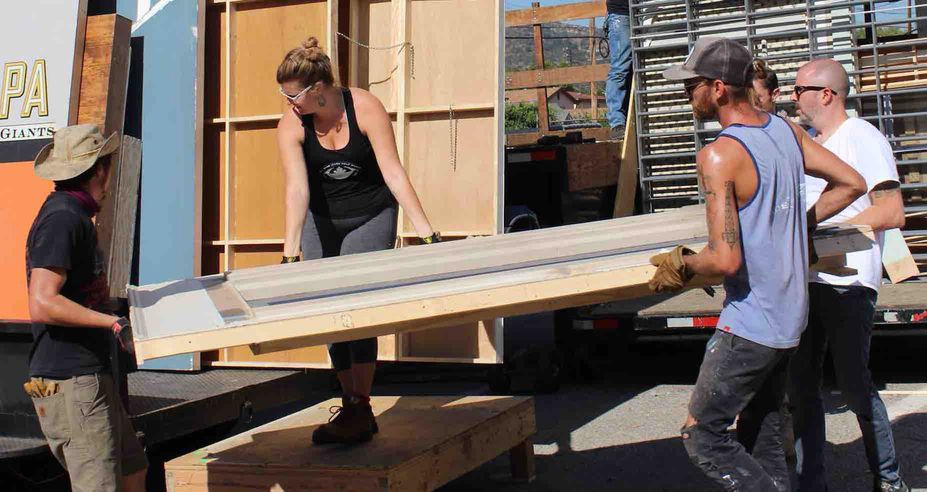
Try vegetarian or vegan options for crafty and catering.
Animal-based foods account for nearly 85% of the production-related greenhouse gas emissions and nearly 90% of agricultural land use. So you might want to consider cutting back on all that cow and chicken.
“Veganism has gone up by 700% in Europe and 600% in the United States,” Dilly says. “If you have to have meat, make sure it is 100% grass-fed and not from a factory farm.”
Do some research on shelters and organizations that take leftover snacks and catering and make it a requirement for your catering to donate the remaining food. We can promise you that for every catering company that tells you that they can’t rehome food, there is one that does.

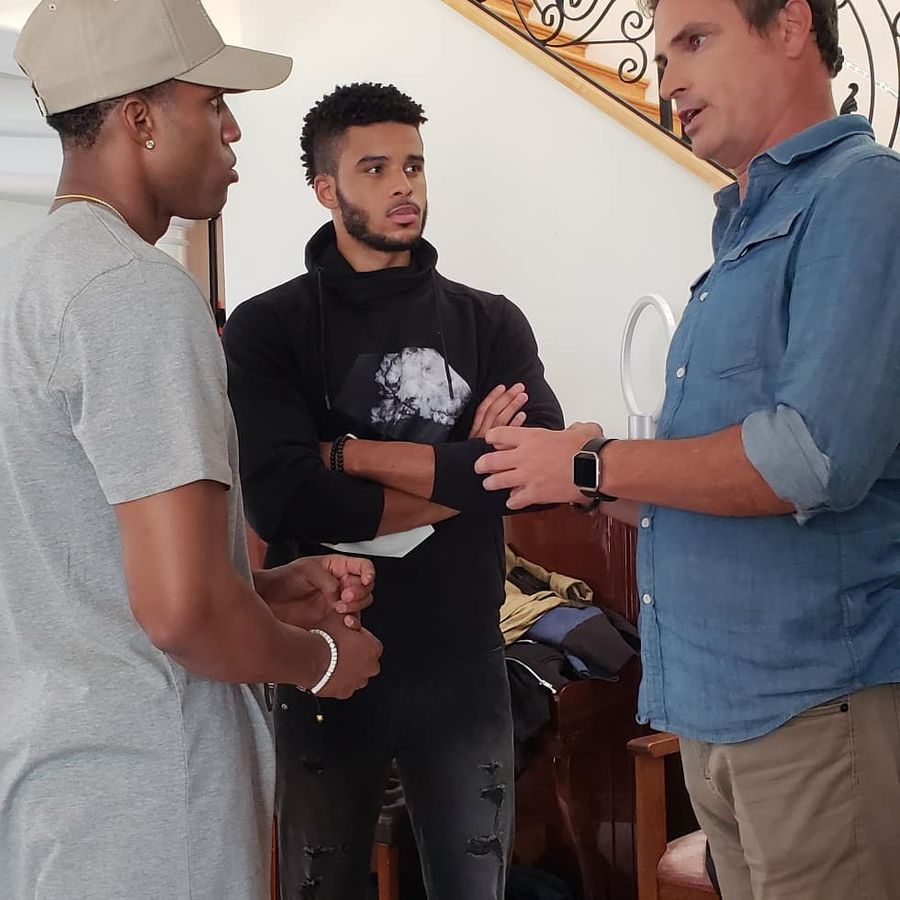
Be intentional with the script and understand your impact.
“I love Big Bang Theory but it drove me nuts that every single episode they were getting take out, eating with plastic silverware, and drinking from plastic water bottles,” Dilly says.
When building a world, the writer doesn’t want to hold back their imagination. And, with tax incentives around the globe making it cheaper than ever to make films, the writer’s biggest fantasies can become a reality. However, all that travel for cast and crew adds up in terms of a carbon footprint.
Try to shoot as close to home as possible, and work some sustainability into the script! Why shouldn’t your protagonist recycle? Put a wind turbine in the back. Sneak a recycle bin into your character’s kitchen. Imagine a world where solar panels are as normal as the roof itself. Make sustainability the subliminal message here, people!
“The biggest impact you can have is just having one week where a 10-second conversation [about plastic water bottles] happens. Or we see a character turn off the light whenever they leave a room,” says Dilly. “Small things like that make a huge impact.”
Print minimal shoot documents.
You need to have access to your shot list, call sheets, and sides. Duh. However, instead of printing multiple, try printing a few and making them big to post around the set. Send the documents out the night before and people can pull it up on their phones. Apps like Scriptation, Preview, and iAnnotate are great tools to do some of the work you normally waste trees on.
Make it known that sustainability is required on set.
Emailing a memo to your crew to reiterate how important sustainability is for the set can be helpful in setting the tone for best practices. Going green is a habit-forming act—the more you press the importance of it on your set, the more your cast and crew will carry it onto other sets.
Ari’s work with Green the Bid recognizes this. It’s acknowledging that we as an industry need to wake up, check our privilege, and hold ourselves accountable by pledging to put sustainability into practice. “Green the Bid doesn't cost the production extra. It’s just saying to make sure that it’s balanced,” Ari says. “How can you create some kind of simple standard so that production companies can adopt this? And how do you level it up so that clients are inspired and feel the pressure to create a standard base level thing that everyone can follow?”
There are more initiatives in the works to continue moving the process forward, such as the Producers Guild of America’s Green Production Guide, which logs various resources and checklists. According to Variety, “the most disseminated document is known as ‘the peach,’ or Production Environmental Accounting Checklist.
Guidelines for soundstages on the lot include eliminating plastic utensils and supplies in favor of paper products, using water dispensers and reusable canteens instead of bottled water, and tapping into the studio power grid as opposed to relying on fuel-powered generators.”
If you feel like you’re on the struggle bus to implement these tools, consider sustainability consulting. Organizations like Earth Angel and Ecoset are here to help. These are businesses focused on consulting and even working on the ground with productions and studios to help create sustainable initiatives. They basically do all the work for you. Ecoset is really cool because not only do they take your old sets, but you can reuse them for free. Kris says, “Our model is that the stuff comes to us for a fee, like trash has a cost, and leaves for free. So right now we aren’t renting or selling our sets but we’re giving it away. It may not be exactly what you need but you can rehab, paint whatever it is. Cause you’re getting it for free.”
This option may not work for everyone—most are far from cheap. But the tools they can provide for a set are worth the money if you have it. Michael and the folks over at Good Planet have made it their mission to make sustainability consulting affordable. He believes strongly in the importance of having a designated team for the sustainability gig. “I changed the business model of Good Planet to a partnership model. So now we charge very low rates with the understanding that we work on all those companies' production,” Michael says. “There are no contracts but its an integrity thing. We have such happy people after the production that I’m not worried about them not hiring us again.”
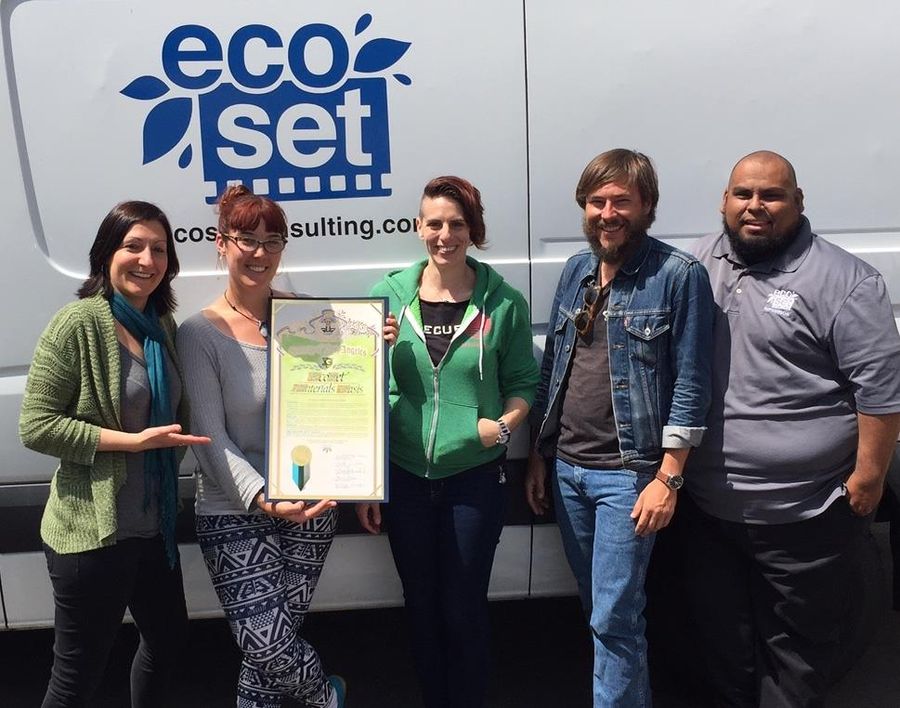
Find a way to make each department eco-friendly.
Every department can go green in the most microscopic of ways—so save the excuse. The art department can reuse and donate sets. Wardrobe should be shopping at thrift stores and returning items post-shoot. The electric department should be recycling batteries and finding low-energy options. No one is left out from the road to sustainability!
Michael came through with some specific tips on this one: PA’s can be managing the compost and recycling stations to make sure they are being used properly. Wardrobe can shop vintage, using those reusable bags. After the shoot, what we do, we donate our leftover wardrobe to shelters that can use the clothes or if it’s costuming we can take it to theater companies.”
Another example, according to Variety, on the film set of The Possession of Hannah Grace, production designers constructed a critical scene “…entirely from Emagispace blocks — fiberboard panels similar to Legos that can build entire multi-room sets, then come apart and be fashioned into new ones.”
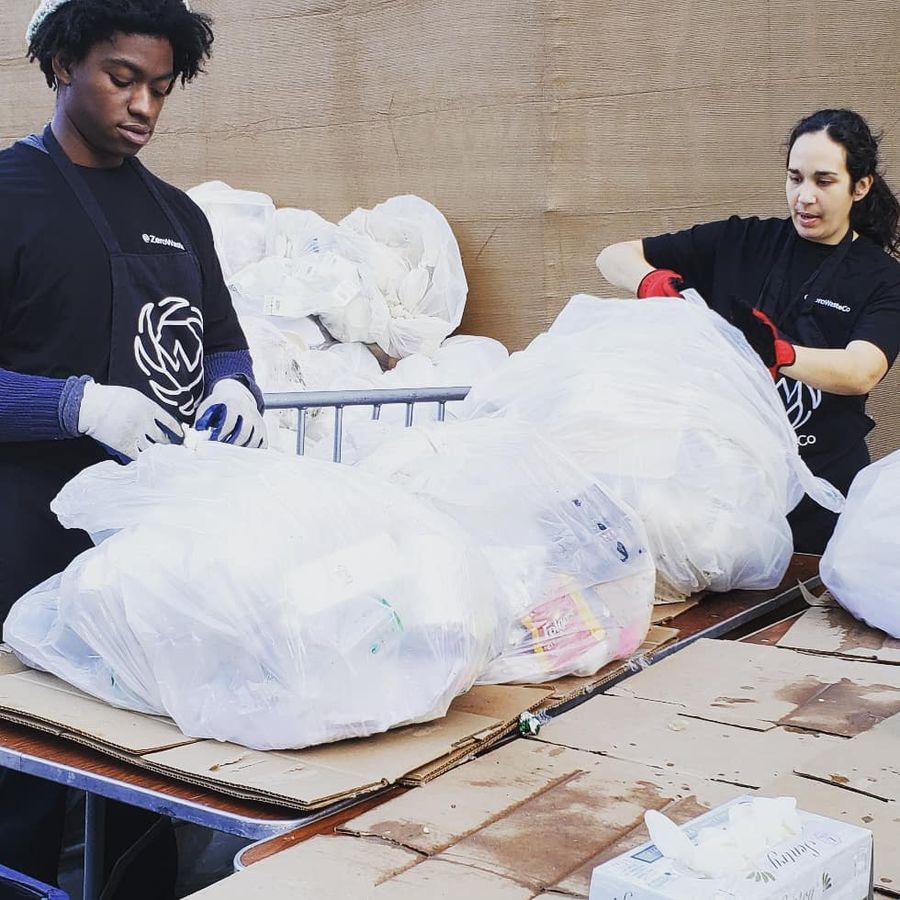
Give a F*ck!
We only have one planet and one shot at cleaning up the massive dumpster fire we have ignited. If we want the chance to save our world from destruction, the first step is simply caring. It may seem corny, but that truly makes all the difference. Ari certainly thinks so: “Save it because you love it. Change your ways because you have this connection to nature and the planet and you realize that you are being amongst this huge system. If we trash that system, we get trashed with it. It goes back to love. Loving yourself and showing up and wanting to do this from a place of love not shame or guilt. Save it because you love it.”
Resources and Organizations:
Africa Media: Environmental and Wildlife media training company in South Africa
ADGreen: guides & best practices for commercial shoots
The Code of Best Practices for Sustainable Filmmaking
Earth Angel: Sustainability Consultancy
European Center for Sustainability in the Media World
Fresco Films: A Sustainable Spanish Production Company
Good Planet: Sustainability Consultancy
Green Screen: Best practices for reducing carbon footprint of European film
Green Shoot: Eco-Friendly Film Production Company in South Africa
MPAA Studios’ Eco-Friendly Initiatives
NBC Universal Sustainability Initiative
The Code of Best Practices for Sustainable Filmmaking
The PEACH (PRODUCTION ENVIRONMENTAL ACTIONS CHECKLIST (PEACH) BEST PRACTICES)
The PGA Green Production Guide’s Green Vendor Search
The Potential Energy Coalition
Westbay Foam: Provides 100% recycled materials for set construction
Staff Me Up – EcoSet Best Practices
EcoSet Basic Sustainable Production Recommends
